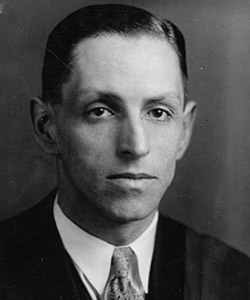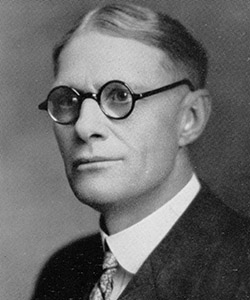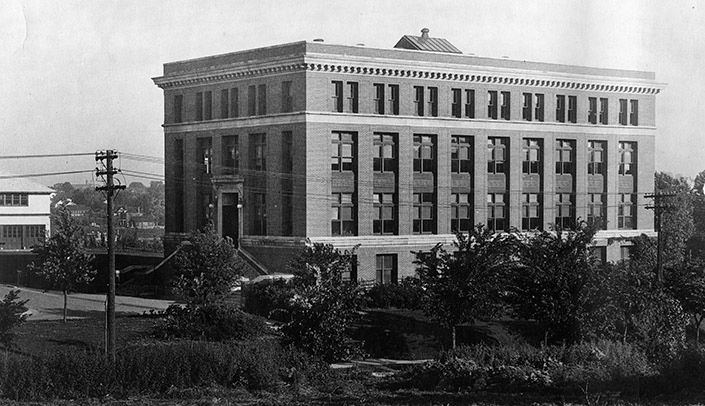Have you ever wondered what medical school was like 100 years ago? Were the instructors demanding? Were the courses more difficult? How did the students survive without computers?
Edward Holyoke, MD, PhD, University of Nebraska College of Medicine graduate and longtime basic sciences faculty member, shared his memories as an early twentieth-century medical student in “Golden Anniversary.”
Published in 1980 as part of the Centennial Trilogy of the University of Nebraska College of Medicine, “Golden Anniversary” whimsically brings to life the faculty, the courses, and student life in the late 1920s and early 1930s.
 |  |
John Latta, MD | C.W.M. Poynter, MD |
The first year of medical school has always been important, because it builds the foundation of medical knowledge. In the first eight weeks, students participated in embryology and bacteriology. In the late 1920s, first-year students were initiated into medical school through embryology, taught by John Latta, MD. Embryology was an “elimination” course, where 15-20 students would fail or quit, determining who could survive in medical school. Dr. Latta lectured on the history of embryology and led the students through the laboratory sessions with microscopes. Students created notebooks with hand drawings of microscopic slide material.
Students next advanced to gross anatomy with C.W.M. Poynter, MD, and histology with Dr. Latta. Gross anatomy students purchased a large anatomy textbook, dissecting instruments, white pants, coat and cap. Gross anatomy consisted of Dr. Poynter’s lectures in the amphitheater and the dissections. Students carried out the dissections in the “bullpen,” a large room with six tables and private rooms sectioned into compartments by slate partitions.
Dr. Poynter shared more than just anatomy, lecturing on medical history and philosophy. Manuel Grodinsky, MD, and Dr. Poynter walked through the lab wearing black coats, directing the dissections. Dr. Grodinsky was a challenging but very knowledgeable teacher who gave students a “dressing down” for lack of attention. The semester did not end at Christmas, as students returned after the holiday to perform more dissections.
During the second semester, gross anatomy classes continued with a focus on the head and neck. After this grueling exercise, students traditionally threw parties, which Dr. Holyoke described as “the most explosive of the year.”
As if dissection was not challenging enough, students completed hours-long exams and labored in the library to write their freshmen theses. As the semester ended, some students completed their final comprehensive examinations in the “star chamber,” named after the English Renaissance royal court renowned for secrecy and anxiety-producing proceedings.
In the end, of 100 students who started the freshmen year, only about 78 finished.
Read Dr. Holyoke’s book, “Golden Anniversary” on Digital Commons.

Thanks Erin. Nice article.